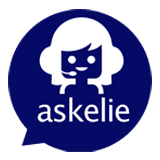In today’s fast-moving world, employees are under constant pressure to juggle competing priorities, manage growing workloads, and respond rapidly to change. Many organisations are now exploring how implementing AI in the workplace can give staff the time and focus they need to concentrate on what really matters. But where should you begin?
The key is to approach AI thoughtfully. It’s not about throwing the latest tools at staff, it’s about aligning technology with real human needs. Done right, AI doesn’t replace employees, it supports them, reduces noise, and helps them work smarter.
Implementing AI in the Workplace Starts With the Problem
Before rushing into solutions, step back and consider the actual challenges your team faces. Is the issue information overload? Missed deadlines? Repetitive admin tasks draining energy? Or poor visibility over what’s urgent versus what’s important?
Run listening sessions, review productivity patterns, and gather input from staff across departments. This ensures any AI tool you bring in directly addresses genuine pain points, rather than being driven by hype or trends.
Target High-Impact, Low-Disruption Use Cases
When implementing AI in the workplace, small but powerful use cases are the best place to start. Some of the most effective examples include:
- Automated Task Prioritisation – AI-powered to-do lists that analyse calendars, deadlines, and work patterns to suggest the most important tasks first.
- Meeting Summaries – Tools that transcribe and summarise meetings, helping employees focus on clear actions instead of replaying recordings.
- Inbox Triage Assistants – Natural language AI that sorts and prioritises emails by urgency, cutting down inbox clutter.
- Smart Daily Briefings – Personalised AI rundowns that highlight what needs attention each day.
These solutions don’t disrupt core workflows but quickly demonstrate how AI can relieve pressure and boost productivity.
How to Embed AI in the Workplace Successfully
One of the biggest mistakes organisations make is introducing AI as a separate app or standalone system. For successful adoption, AI must live inside the tools employees already use, such as Microsoft 365, Trello, or Slack.
Seamless integration is vital. If an AI tool requires a separate login or doesn’t fit into existing workflows, it risks being ignored.
Building Trust When Implementing AI in the Workplace
Trust is one of the biggest barriers to AI adoption. Employees won’t embrace a system if they don’t understand how it works or if they feel micromanaged.
Transparency matters. If an AI assistant flags a task as urgent or suggests rescheduling, staff should be able to see the reasoning. Keep humans in control, with AI providing support rather than dictating decisions.
Train, Support and Involve Staff
Implementing AI in the workplace is not a one-off technical project, it’s a change journey. Involve staff early, run pilots, collect feedback, and offer hands-on training. Explain not just how the AI works, but why it’s being introduced, to reduce stress and free up time, not to monitor performance.
When employees feel involved and supported, they are far more likely to trust and adopt the tools provided.
Monitor, Learn and Evolve
AI adoption doesn’t end at launch. Track usage, gather feedback, and measure productivity improvements. Adjust workflows and fine-tune tools based on real-world results. The most effective AI implementations evolve alongside the organisation’s needs.
Final Thoughts
Implementing AI in the workplace has the potential to give staff control of their day, cut through noise, and focus on high-value work. But technology alone isn’t enough. Successful adoption requires empathy, alignment with real needs, and a focus on people first.
Organisations that take a structured approach to implementing AI in the workplace not only improve productivity but also strengthen employee wellbeing. If you’re ready to explore what this looks like in practice, askelie can help.
When done properly, AI doesn’t just make organisations faster, it makes them calmer, more focused, and more effective.



Comments are closed